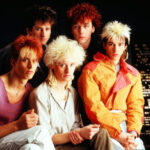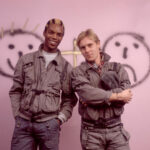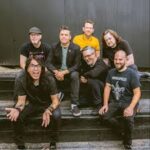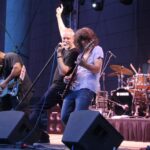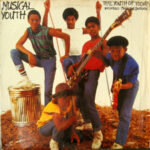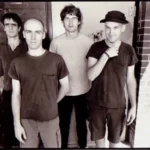Spacehog, a British-American rock band, emerged on the alternative music scene in the early 1990s with a sound that blended glam rock, alternative, and post-grunge influences. Formed in 1994, the band consisted of brothers Royston Langdon (vocals, bass) and Antony Langdon (guitar, vocals), along with Jonny Cragg (drums) and Richard Steel (guitar). The band’s name was derived from the 1970s glam rock term “space hop,” and their eclectic musical style reflected the diverse influences of their members.
The breakthrough for Spacehog came with their debut album, “Resident Alien,” released in 1995. The album featured the hit single “In the Meantime,” a glam-infused anthem with catchy hooks and Royston Langdon’s distinctive vocals. “In the Meantime” quickly became a radio staple and earned the band mainstream recognition, propelling “Resident Alien” to commercial success.
Following the success of their debut, Spacehog faced the challenge of meeting expectations with their sophomore effort. In 1998, they released “The Chinese Album,” a departure from the glam-infused sound of their debut. This album showcased a more experimental and introspective side of the band, exploring themes of identity and self-discovery. While “The Chinese Album” didn’t achieve the same commercial success as its predecessor, it demonstrated Spacehog’s willingness to evolve musically and take artistic risks.
The late ’90s saw changes within the band. Richard Steel departed, and Spacehog continued as a trio for their third album, “The Hogyssey,” released in 2001. This album featured a return to a more straightforward rock sound but failed to make a significant impact commercially. The early 2000s marked a period of relative quiet for Spacehog as they navigated changes in the music industry landscape.
After a hiatus, Spacehog reunited in 2008 for sporadic live performances, stoking the interest of fans who had been eager for new material. In 2013, they released “As It Is on Earth,” their first studio album in over a decade. The album showcased a mix of classic Spacehog elements and a renewed energy, reaffirming their place in the alternative rock scene.
In addition to their musical endeavors, Spacehog members pursued various projects. Royston Langdon, in particular, engaged in solo work and collaborations. The band’s ability to maintain a connection with their audience, despite periods of inactivity, attests to the enduring appeal of their distinctive sound and the impact they had on fans during their heyday.
Spacehog’s influence extended beyond their discography; their music has been featured in films and commercials, contributing to their lasting cultural imprint. The band’s eclectic mix of glam, alternative, and rock elements, coupled with Royston Langdon’s charismatic stage presence, created a unique identity that resonated with listeners seeking a departure from the mainstream.
In the 2010s, Spacehog continued to tour and perform live, showcasing their enduring passion for music. Their concerts became a celebration of nostalgia for longtime fans and an introduction to their sonic universe for a new generation.
As we reflect on the history of Spacehog, it becomes evident that their journey is characterized by artistic exploration, resilience in the face of industry changes, and a commitment to staying true to their musical roots. From the glam-infused heights of “In the Meantime” to the introspective depths of “The Chinese Album” and the reinvigorated spirit of “As It Is on Earth,” Spacehog’s evolution mirrors the dynamic nature of alternative rock itself.
Ultimately, Spacehog’s story is one of a band that carved its own path, leaving an indelible mark on the alternative music landscape. Their ability to blend genres, experiment with their sound, and maintain a sense of authenticity throughout their career solidifies their place in the hearts of fans who continue to appreciate the timeless allure of Spacehog’s sonic universe.
This post has already been read 232 times!

